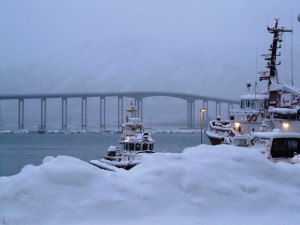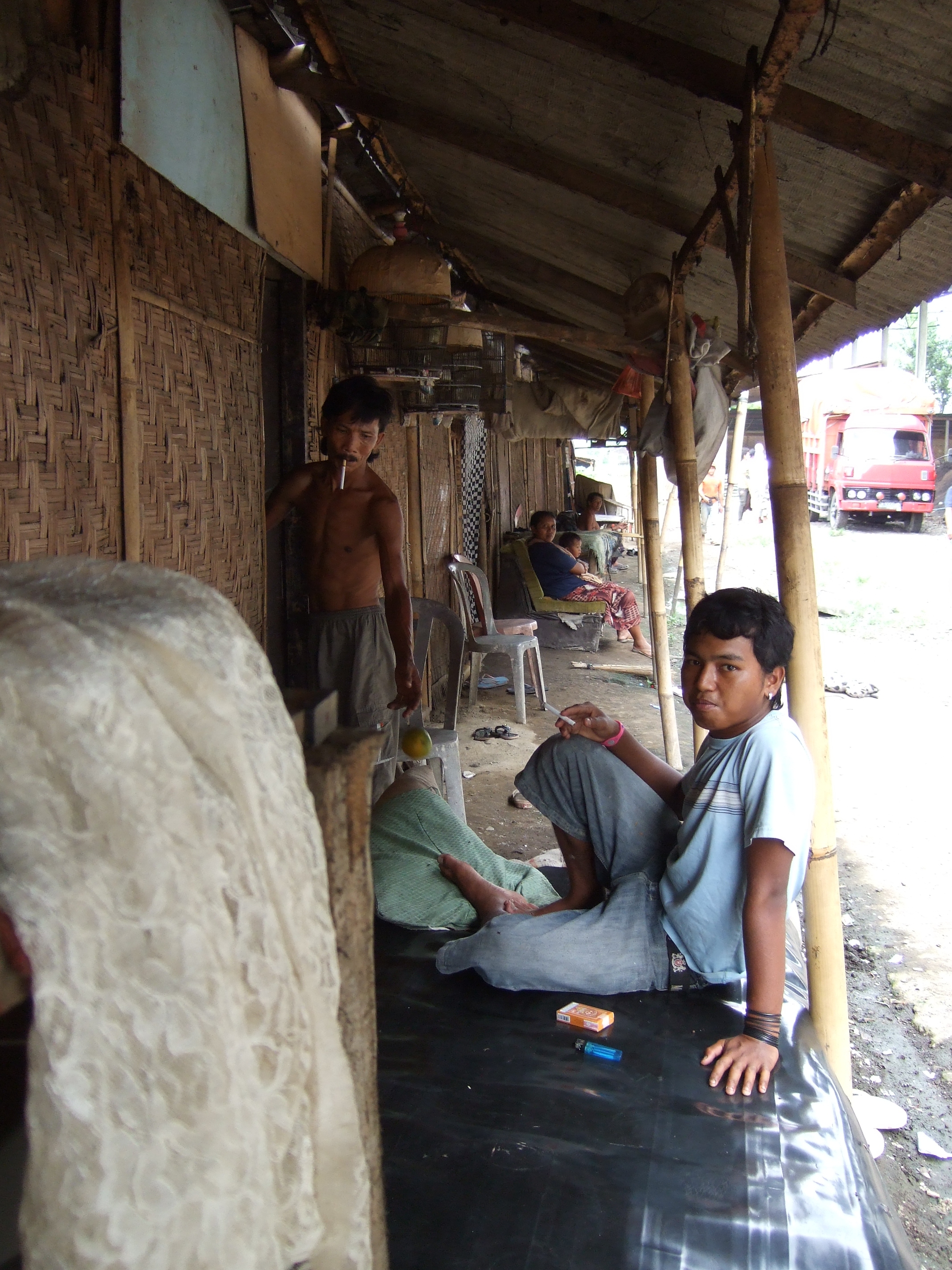Search Results for Tag: climate
Will there be a democracy in Uganda?
This week there are national elections in Uganda. Many people I asked about the elections told me that democracy does not work in Uganda. "What we need is a new strong dictator", a woman told me. "The people just make the wrong decisions, they don´t know what is good for the country". I travelled to the countryside near the border to the Congo. Many people in Uganda live in small villages like the one you see in the video above. Many of them are disappointed – they don't have jobs. For the past two years there has also been an extreme drought. The crime rate is rising fast. The people that I asked in the villages hope for a law-and-order president. Many say that Som daid Idi Amin, the Ugandan dictator from the 1970s was not so bad. Having the freedom and democracy movements in northern Africa in mind I was kind of shocked and surprised. Are the people expecting demonstrations and riots during the election week? 'Yes', many said. Because they are quite sure that the results of the elections are going to be rigged. I'm wondering: What do they want? Free and democratic elections and a new dictator? What are they going to demonstrate for?
The Gateway to the Arctic?
 I have just about thawed out enough to write this, having spent a couple of hours taking pictures and recording sound in the beautiful but chilly twilight of an Arctic afternoon in January. I’m reporting for Deutsche Welle from "Arctic Frontiers". Now what does that bring to your mind? Northern countries squabbling about territory? Or the frontiers posed by snow, ice and extreme conditions to all but explorers, adventurers and the hardiest of scientists? A conference is probably the last thing that comes to mind – unless, like me, you are into the science and politics of the Arctic region.
I have just about thawed out enough to write this, having spent a couple of hours taking pictures and recording sound in the beautiful but chilly twilight of an Arctic afternoon in January. I’m reporting for Deutsche Welle from "Arctic Frontiers". Now what does that bring to your mind? Northern countries squabbling about territory? Or the frontiers posed by snow, ice and extreme conditions to all but explorers, adventurers and the hardiest of scientists? A conference is probably the last thing that comes to mind – unless, like me, you are into the science and politics of the Arctic region.
 Every year at this time, when people in the Arctic celebrate the "return of the sun" after the long dark Northern winter (it stays light from around 9.30 until nearly three at the moment), the Arctic Frontiers conference brings scientists, politicians, decision-makers, students and NGOs to Tromsö, two hours flight from the Norwegian capital Oslo and in the Arctic Circle. The town likes to be known as Norway’s "gateway to the Arctic". Historically, it has been the base for Arctic expeditions and still is. A lot of the more "comfort-loving" travellers who pass through nowadays are tourists on cruise ships. And the way the climate is changing, Tromsö is likely to be the departure point or maritime "crossroads" for a lot more travellers – and a lot more goods, in the not too distant future.
Every year at this time, when people in the Arctic celebrate the "return of the sun" after the long dark Northern winter (it stays light from around 9.30 until nearly three at the moment), the Arctic Frontiers conference brings scientists, politicians, decision-makers, students and NGOs to Tromsö, two hours flight from the Norwegian capital Oslo and in the Arctic Circle. The town likes to be known as Norway’s "gateway to the Arctic". Historically, it has been the base for Arctic expeditions and still is. A lot of the more "comfort-loving" travellers who pass through nowadays are tourists on cruise ships. And the way the climate is changing, Tromsö is likely to be the departure point or maritime "crossroads" for a lot more travellers – and a lot more goods, in the not too distant future.
 The melting of the Arctic sea ice, a lot faster than anticipated, is making the remote wilderness of this ecologically fragile region much more easily accessible. US rear admiral Dave Titley said in a presentation here the US navy reckons with a whole month of summer with no sea ice as early as 2030. That date has been continually coming forward in recent years. The question is what it will mean for the Arctic – and the rest of the planet. "Arctic Tipping Points" is the title of this year’s conference – which goes on for a whole week, with a political and a science segment. The Arctic plays a key role in regulating the world’s climate. Scientists are trying to work out when key factors – like the melting of the sea ice, which also acts as a protective cover, reflecting heat from the sun back up and away from the earth – could reach a "tipping point", or point of no return, triggering further warming as the darker ocean absorbs more heat. One study quoted here says 6 of 14 elements identified as "tipping elements" in the "earth system" are located in the Arctic.
The melting of the Arctic sea ice, a lot faster than anticipated, is making the remote wilderness of this ecologically fragile region much more easily accessible. US rear admiral Dave Titley said in a presentation here the US navy reckons with a whole month of summer with no sea ice as early as 2030. That date has been continually coming forward in recent years. The question is what it will mean for the Arctic – and the rest of the planet. "Arctic Tipping Points" is the title of this year’s conference – which goes on for a whole week, with a political and a science segment. The Arctic plays a key role in regulating the world’s climate. Scientists are trying to work out when key factors – like the melting of the sea ice, which also acts as a protective cover, reflecting heat from the sun back up and away from the earth – could reach a "tipping point", or point of no return, triggering further warming as the darker ocean absorbs more heat. One study quoted here says 6 of 14 elements identified as "tipping elements" in the "earth system" are located in the Arctic.
Other speakers – like the Rear Admiral – have other interpretations of "tipping points" – like the Arctic "tipping" from being a remote inaccessible area into a mainstream region for (literally) "business as usual". Well not quite as usual. This remains a harsh and dangerous environment. But the business opportunities are definitely there. And what do the conservationists, NGOs and indigenous communities up here have to say about all this? Join me for regular updates on the Ice Blog.
Recycling in Bali – Day 2: Making a living on the trash dump
People living on a dump. These Balinese collect plastic bottles and other stuff that can be sold for recycling. For a kilo of bottles, they get around 5 Euros. That's how recycling works on the island. It's a basic system but the only one that works. There are high-tech dumps elsewhere. But they're not working because nobody is able to maintain the machines. It seems to be the only way to get rid of all the garbage.
Warm Planet, Cold Winter
If you haven't noticed, winter has been especially harsh this year. Much of Northern Europe is in a deep freeze, and any passengers flying through London, Frankfurt or Paris know all too well what this winter has done to travel plans. The U.S. and Canada have been slammed with major snow storms that have left people stranded and desperate during the holiday season. And it's only December…
Some people are wondering: if the planet is getting warmer, why is it so cold? The New York Times has an interesting op-ed article about the reasons behind this trend. The author, Judah Cohen, says increased snow cover in Siberia actually has a major impact on our climate–but he believes scientists have ignored the region's role in warming and cooling earth.
Cohen says snow cover in Siberia has changed jet stream patterns, pushing more air north and south rather than just east and west. That's why Northern Europe and the U.S. have seen such extreme winter weather in recent years. What do you think? Is Cohen's theory a good explanation?
Ancient Climate History
Researchers are drilling under the Dead Sea in Israel–almost 800 meters below sea level, to be exact. Why? Scientists are collecting rock samples far underneath the water level because they believe those sediments will be extremely well-preserved, and they could reveal some important clues about earth's history.
The International Continental Scientific Drilling Program (ICDP) includes a team of researchers from around the world, and they think the rocks they find under the Dead Sea will paint a much clearer picture of climate change history in the area around Bethlehem. So far, the workers have already drilled through around half a million years worth of sedimentary rock, which has helped them learn more about earthquake activity in the region.
And what researchers learn in Israel could help them understand more about climate change across the planet. One scientist who's taking part in the drilling mission said the group's findings will have a major impact on science and environment studies, and they could tell us a lot about natural resources in the area.











Feedback